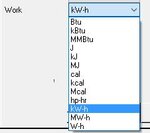If you stored 500 Watts Manu, it probably took 10 seconds to charge the battery, Manu, didn't it. (Joke, in any case).
You do not store "watts" in the battery. You store watt-hours. If you were unloading a 576 Wh battery, you might get electric
current of 250 W / 36 V = 6.9 Amperes and this current flows through the motor circuits, disregarding the battery capacity. However, since you are drawing energy from the battery, and you are drawing 250 W, your battery will work for 576 / 250 = 2.304 h or roughly for two hours and eighteen minutes.
Also, the fact Wh (not W!) are measure of energy stored is the charging process. Assuming your charger is 4 A and the voltage is 36 V, you push 36 * 4 = 144 Watts or 144 Joules per every second. Your battery capacity is 576 Wh, so charging would take
at least 576 / 144 = 4 hours. It is because you are storing energy (Wh) not power (W).
Still, it is hard to talk to someone who mixes pears (Watts) with apples (Watt-hours). Both are fruit, true. Both are engineering units. For different physical quantities.
Good joke
@PaD 
So I can tell you the tank of my car is good for at least 900 km

How many liters per Swedish mile does my car use?
![20200110_210405[1].jpg](/data/attachments/44/44054-ccf7d352c112a98b2ffa7a50c85133b3.jpg)

